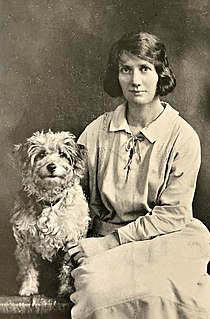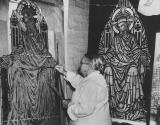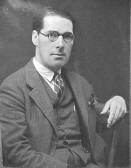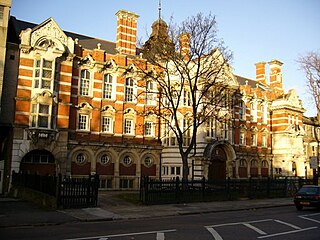
Art Nouveau is an international style of art, architecture and applied art, especially the decorative arts, known in different languages by different names: Jugendstil in German, Stile Liberty in Italian, Modernisme in Catalan, etc. In English it is also known as the Modern Style. The style was most popular between 1890 and 1910. It was a reaction against the academic art, eclecticism and historicism of 19th century architecture and decoration. It was often inspired by natural forms such as the sinuous curves of plants and flowers. Other characteristics of Art Nouveau were a sense of dynamism and movement, often given by asymmetry or "whiplash" curves, and the use of modern materials, particularly iron, glass, ceramics and later concrete, to create unusual forms and larger open spaces.

Louis Comfort Tiffany was an American artist and designer who worked in the decorative arts and is best known for his work in stained glass. He is the American artist most associated with the Art Nouveau and Aesthetic movements. He was affiliated with a prestigious collaborative of designers known as the Associated Artists, which included Lockwood de Forest, Candace Wheeler, and Samuel Colman. Tiffany designed stained glass windows and lamps, glass mosaics, blown glass, ceramics, jewelry, enamels, and metalwork. He was the first Design Director at his family company, Tiffany & Co., founded by his father Charles Lewis Tiffany.

Henry Holiday was a British historical genre and landscape painter, stained-glass designer, illustrator and sculptor. He is considered to be a member of the Pre-Raphaelite school of art.

Selwyn Image was an important British artist, designer, writer and poet associated with the Arts and Crafts Movement. He designed stained glass windows, furniture, embroidery, and was an illustrator of books. Image was the first Slade Professor of Fine Art at Oxford from 1910 to 1916.

The Byam Shaw School of Art, often known simply as Byam Shaw, was an independent art school in London, England, which specialised in fine art and offered foundation and degree level courses. It was founded in 1910 by John Liston Byam Shaw and Rex Vicat Cole. In 2003 it was absorbed by Central Saint Martins College of Arts and Design.

Sir William Blake Richmond KCB, RA, PPRBSA was an English portrait painter, sculptor and a designer of stained glass and mosaic. He is best known for his portrait work and decorative mosaics in St Paul's Cathedral in London.

Hardman & Co., otherwise John Hardman Trading Co., Ltd., founded 1838, began manufacturing stained glass in 1844 and became one of the world's leading manufacturers of stained glass and ecclesiastical fittings. It was wound up in 2008.

Christopher Whitworth Whall was a British stained-glass artist who worked from the 1880s and on into the 20th century. He is widely recognised as a leader in the Arts and Crafts Movement and a key figure in the modern history of stained glass.
Ernest Archibald Taylor, better known as E A Taylor, was a Scottish artist, an oil painter, watercolourist and etcher, and a designer of furniture, interiors and stained glass.

Veronica Mary Whall (1887–1967) was an important stained glass artist, painter, and illustrator associated with the Arts and Crafts Movement. Her father, Christopher Whall, was the leader of the Arts and Crafts Movement in stained glass. She was educated in the techniques of painting and stained glass making in her father's studio-workshop. She later became his studio assistant and designer for his studio in 1914. In 1922, Whall and her father co-founded a stained glass studio together, which she managed for nearly thirty years after his death in 1924.
Donald MacDonald (1841–1916) was a leading stained glass artisan and designer in 19th century Boston. Born Donald McDonald, he altered the spelling of his surname to "MacDonald" around 1877.
Karl Bergemann Parsons was an English stained glass artist associated with the Arts and Crafts movement.
Edward Woore or Davie Woore (1880–1960) was a British stained glass artist and member of the British Society of Master Glass Painters. He was a student, apprentice and collaborator with Christopher Whall a stained glass artist and leader in the Arts and Crafts Movement.
Gordon Mitchell Forsyth (1879–1952) was a Scottish ceramic designer and fine artist and art education innovator.

Francis Walter Skeat was an English glass painter who created over 400 stained glass windows in churches and cathedrals, both in England and overseas. Skeat was a Fellow of the Royal Society of Arts, a Fellow of the British Society of Master Glass Painters, and a member of the Art Workers Guild.

Florence Camm was a British stained-glass artist, painter and metalworker associated with the Arts and Crafts movement. Camm and her brothers, Walter and Robert, took over the management of the family stained-glass business after her father, T. W. Camm died in 1912. Camm was the principal designer of the firm until her death in 1960.

James Humphries Hogan was an English stained glass designer with the firm of James Powell and Sons throughout his career, rising from apprentice to be managing director of the company. He made magnificent stained glass for many of England's cathedrals, including the 100 feet high central windows of Liverpool Cathedral.
For other people named John Platt, see John Platt.

Frederick Wilson was a British stained glass artist best known for his work with Tiffany Studios. He was a prominent designer of ecclesiastical windows in the United States during the late 19th and early 20th centuries.
Thomas Symington Halliday was a Scottish artist and teacher. Although Halliday was an accomplished sculptor, painter and teacher, he is also known for his designs for stained glass windows.

















